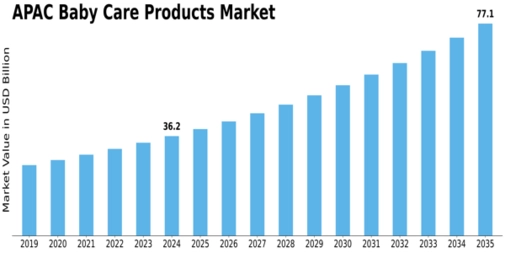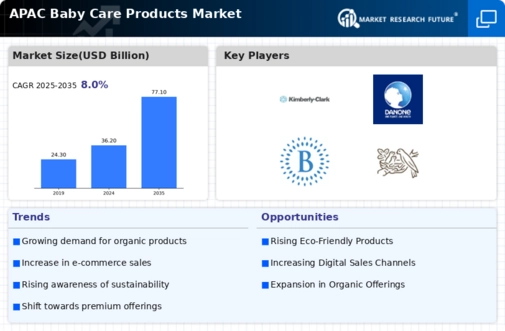Apac Baby Care Products Size
APAC Baby Care Products Market Growth Projections and Opportunities
The Asia-Pacific (APAC) baby care products market is influenced by a myriad of factors that shape its dynamics and growth. One of the key drivers propelling the market is the rising population in the region, coupled with increasing disposable income. As more families in APAC experience higher income levels, there is a growing willingness to spend on premium baby care products, such as organic and eco-friendly options.
Moreover, changing lifestyles and a shift towards nuclear families contribute to the demand for convenience-oriented baby care products. Busy urban lifestyles have led to an increased reliance on time-saving and easy-to-use baby care items, driving innovation in the market. Manufacturers are focusing on developing products that cater to the convenience needs of parents, such as pre-packaged baby food, disposable diapers, and travel-sized toiletries.
Government initiatives and regulations also play a significant role in shaping the APAC baby care products market. Increased awareness about child hygiene and safety has prompted governments to enforce stringent regulations regarding the quality and safety standards of baby care products. This has led to a surge in the demand for certified and compliant products, ensuring that parents can trust the safety of the items they purchase for their infants.
Cultural factors also contribute to the unique dynamics of the APAC baby care market. Traditionally, there is a strong emphasis on natural and herbal remedies in many Asian cultures. This preference extends to baby care, with a growing demand for products that incorporate natural ingredients and are free from harmful chemicals. Manufacturers are responding by introducing organic and natural baby care lines, capitalizing on the cultural inclination towards holistic and sustainable choices.
E-commerce has emerged as a powerful force shaping the APAC baby care products market. The region has witnessed a rapid increase in online retailing, driven by the convenience of shopping from home and access to a wide variety of products. E-commerce platforms provide a convenient avenue for parents to explore and purchase baby care items, driving the growth of the market. Additionally, online platforms serve as a channel for information dissemination, allowing parents to make informed choices based on reviews and product specifications.
Social and demographic trends also contribute to the market dynamics. The increasing trend of delayed parenthood and a focus on smaller family sizes have led to a greater willingness among parents to invest in high-quality and premium baby care products. The desire to provide the best for their children, coupled with the availability of a diverse range of products, fuels the growth of the market.








Leave a Comment